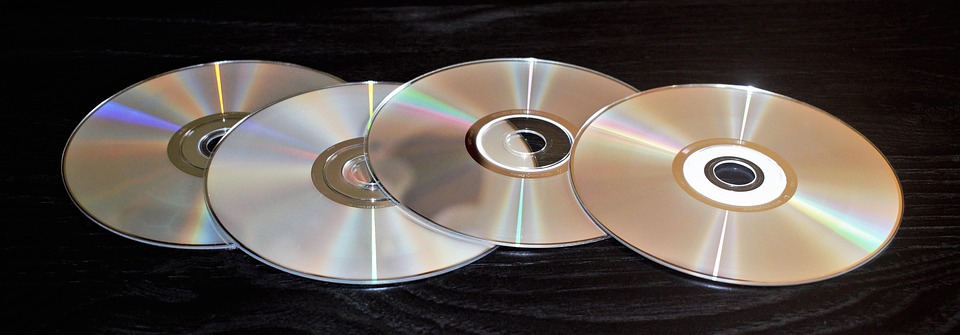Tech
RAM vs. ROM: Key Differences Explained

Hey there! Have you ever confused RAM and ROM while trying to navigate your tech-loving world? Don’t worry! You’re not alone. Today, we’re diving into the nitty-gritty details of these two types of memory. It’s like comparing apples and oranges—both are essential but incredibly different when you break it down. So grab a snack, get comfy, and let’s unravel the mystery of RAM and ROM!
What Is RAM?
Alright, first up, let’s chat about RAM, or Random Access Memory. Think of it as your device’s short-term memory. Whenever you open an app, play a game, or browse the web, RAM takes the wheel. It’s all about speed and accessibility.
Key Characteristics of RAM:
-
Volatile Memory: This means it loses all stored data when you shut down your device. So, once you power off your laptop or smartphone, goodbye, all those cool tabs you had open!
-
Fast Access: RAM is designed for speed. Having more RAM is like having a bigger table to work on; you can spread out your activities without running out of space or slowing down.
-
Temporary Storage: When you’re multitasking, think of RAM as your workspace where things get done quickly. Once the task is completed, the data is no longer needed until you decide to use that app again.
Why Is RAM Important?
Picture this: you’re working on a massive project that involves a hefty design software and a YouTube tutorial open at the same time. If your device has low RAM, it could struggle to keep both running smoothly. More RAM means a smoother experience for all those demanding tasks.
What Is ROM?
Now, let’s switch gears and talk about ROM, or Read-Only Memory. While RAM is all about what’s happening in the moment, ROM is your device’s long-term memory.
Key Characteristics of ROM:
-
Non-Volatile Memory: Unlike RAM, ROM retains its data even when the power is turned off. It’s like the recipe book you keep in a kitchen drawer—it’s always there even when you turn off the lights.
-
Storage for Firmware: ROM is primarily used to store firmware, which is the software that’s closely tied to specific hardware. That includes everything from the basics that allow your computer to boot up to more specialized functions.
-
Slower Access: Data in ROM is not meant to be changed frequently, so it’s typically slower to access than RAM. Think of it like the internet connection in your grandma’s house—nobody’s rushing, but it gets the job done!
Why Is ROM Important?
Consider your smartphone. The operating system and other essential applications reside in the ROM, ensuring everything works harmoniously. Without it, your device wouldn’t know how to function properly.
RAM vs. ROM: The Key Differences
Let’s break down the major differences between these two types of memory through a handy comparison:
1. Data Volatility
- RAM: Volatile. All data is lost when the device is powered down.
- ROM: Non-volatile. Retains data even when off.
2. Primary Purpose
- RAM: Used for temporary storage to facilitate quick access for applications and processes.
- ROM: Used to store firmware and essential software that doesn’t change often.
3. Speed
- RAM: Much faster because it’s designed for quick read/write cycles.
- ROM: Slower access since it’s not meant for frequent changes.
4. Usage Scenarios
- RAM: Think of tasks like video streaming, gaming, or graphic design work where you need speed.
- ROM: Ideal for system functions, embedded systems, or any scenario where crucial, unchanging data needs to be stored.
5. Capacity
- RAM: Generally available in larger capacities. Modern computers can go up to 64GB or more!
- ROM: Typically smaller in size. For instance, a device may come with 16MB to a few gigabytes of ROM.
How They Work Together
So, why worry about these two types of memory? Because they complement each other! Imagine trying to build a house. RAM is your construction team, getting everything set up quickly, while ROM is the blueprint that keeps things organized and in check.
Here’s a quick stack-up on how they play nice together:
- Your device loads the operating system from ROM during startup.
- While you’re navigating or multitasking, data is temporarily stored in RAM for faster access.
- Once you finish a task, if you want to keep any information, it may get saved to your hard drive or SSD, which combines both concepts in a long-term storage solution.
How Much RAM Do You Really Need?
If you find yourself in a tech store, glancing at the shiny specs of a new laptop or desktop, you might wonder, "Okay, how much RAM do I need?" Here’s a quick guideline:
-
Basic Tasks (Browsing, Streaming): 4GB to 8GB should suffice.
-
Mid-level Tasks (Light Gaming, Basic Editing): 8GB to 16GB is ideal to keep things smooth.
-
Heavy Gaming and High-end Work (Video Editing, 3D Rendering): 16GB to 32GB will help keep everything running fluidly.
If you’re curious about the latest trends in tech and memory, you can check out resources from HowStuffWorks.
Conclusion
Well, there you have it! RAM and ROM might not look flashy, but they pack a punch in your devices. They’re like your tech’s best friends, working behind the scenes to ensure everything runs smoothly. The next time someone mentions memory, you can confidently share the scoop on how RAM and ROM differ. Who knew tech talk could be this fun?
